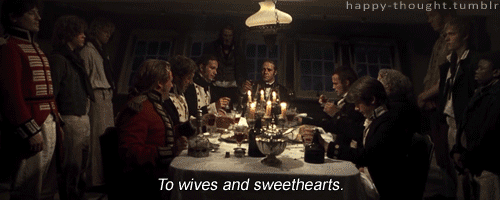
The next time you’re bored with your turkey sandwich at lunch or your salad has got you down, think about these facts about food on the high seas. From “Feeding Nelson’s Navy: The True Story of Food at Sea in the Georgian Era” by Janet Macdonald:
Seamen got a about a pound of bread or biscuit a day. In port they got “soft bread” — bread in loaf form. But biscuits lasted for months and could be made in large quantities. It was made of flour, water and a bit of salt. But don’t think they were easy to sink your teeth into: You likely had to soak biscuits before biting into them, and they had to be kept in an airtight container
Ships had tackle to catch fish when the men had the opportunity. The catch was first offered to those in sickbay, then the crew. Among the fish caught: bonito, turbot and sharks. Gulp.
To drink, sailors had a daily ration of a (U.S.) gallon of beer. It was 2 or 3 percent proof alcohol (Budweiser today is 5 percent) and lasted in a cask for months. After beer, wine or spirits, the men drank water — but only at the ship’s watering place; they couldn’t take their water away from where they were drinking it. A hot drink was “Scotch coffee”: hot water with ground-up burnt biscuit. Yum.
Officers had breakfast at 8 a.m. — same as their men — but ate at different times from them for the other meals. They ate either in a wardroom, where commissioned officers, the surgeon, purser and master ate, or the gunroom, which was for other officers.
Tables would have to be able to be taken apart quickly when the men were clearing for action. To keep plates from moving around, there were several options: wedges to keep dishes upright; bags filled with peas; wet cloths under plates to keep them from sliding, a grid work of yarn to hold items in place or a railed enclosure to keep drinks and decanters from spilling.





Comments